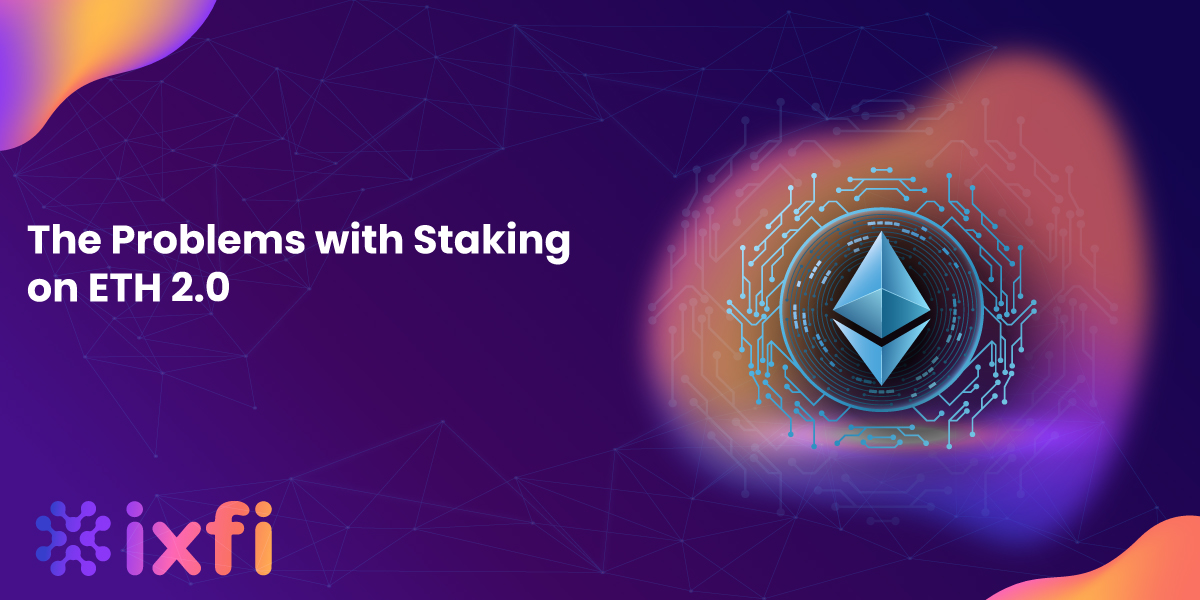The project‘s biggest challenge is to overcome a set of problems that are confronting at the moment, called the Blockchain trilemma. Once a decentralized network is created, it is harder to work on its scalability and cybernetic security, especially without sacrificing the decentralized structure of the network itself. As a result, the original version of Ethereum benefits from considerable upgrades once ETH 2.0 is implemented, and these have multiple phases:
- The Beacon Chain: the current version.
- The Fusion: a step that is eagerly awaited by the entire crypto community and will probably happen during 2022.
The whole set of changes will increase the network’s ability to process transactions, eliminate congestion, reduce gas fees, and, most importantly, change how ETH coins are issued.
Why does ETH 2.0 exist? What are the disadvantages of the original version?
A critical problem is scalability – the characteristic of a system to function well in the conditions of a constantly increasing workload. A scalable system maintains (or increases) the performance and efficiency level, even if the workload increases.
Currently, the network can handle up to 50 transactions per second, which may sound impressive at first glance, but it is not enough for a constantly growing market. Furthermore, networks become more and more congested due to daily transactions with large amounts that take up more significant space. When the protocol becomes very crowded, it is typical for the application or the web page to become slower, whether we are talking about ETH tokens or DeFi applications.
If the network becomes too crowded, the process can be inefficient because taxes increase when the congestion is high. The current operation mechanism for Ethereum is Proof of Work (Pow), which requires miners to compete and solve complex mathematical equations and calculus, to validate the transactions.
The first miner to solve the calculus adds a new block in the Blockchain and receives cryptocurrencies as a reward. However, the problem comes when a considerable amount of computing power is required for these validations. That is what ETH developers are trying to resolve.
How does staking on ETH 2.0 work?
We can say that the staking process represents the locking of a certain amount of cryptocurrency for a specified period. This contributes to the decentralized network’s security and earns passive revenue. Unlike Proof of Work, on a Proof of Stake Blockchain, 32 transaction blocks are reunited every round of validation while the transactions are irreversible.
After the data is consolidated, it goes through multiple rounds of validators to finish each data epoch. Each separated block of data will have its own validators committee. A randomly chosen member will have the right to propose a new block of transactions while the remaining 127 members vote for his proposal. Once the majority has approved a new data block, it is added to the Blockchain, and its reward is earned.
What are the problems we are confronting with?
Even when using the upgraded version of ETH 2.0, users may face various problems. To become validators, we must hold at least 32 ETH coins that we will have to lock up (stake). The more ETH a node holds, the bigger the power of transaction validation. This represents a problem because one validator could monopolize the control over the most active validators in the network, regardless of whether we talk about a cryptocurrency whale or an institutional investor.
Such a monopoly could mean centralizing the system at a much larger scale. To discourage the centralization of active validators (because of hardware and software staking), the ETH 2.0 protocol will establish sanctions and penalties for unfair behavior.
Since the inception of the cryptocurrency market, Bitcoin has positioned itself as the leader of any digital asset. However, because it holds almost half of the cryptocurrency market’s valuation, Ethereum is the second most popular and valuable digital asset. The developers hope to solve as many problems as possible to make the network more accessible. With the improvements’ help, the web will more cheaply support thousands of transactions per second, and decentralized applications will be easier to use.
For a seamless trading experience, register on IXFI where you can find Ethereum and over 450 other cryptocurrencies at your disposal. Your Friendly Crypto Exchange is the perfect environment to learn and earn.
Disclaimer: The content of this article is not investment advice and does not constitute an offer or solicitation to offer or recommendation of any investment product. It is for general purposes only and does not take into account your individual needs, investment objectives and specific financial and fiscal circumstances.
Although the material contained in this article was prepared based on information from public and private sources that IXFI believes to be reliable, no representation, warranty or undertaking, stated or implied, is given as to the accuracy of the information contained herein, and IXFI expressly disclaims any liability for the accuracy and completeness of the information contained in this article.
Investment involves risk; any ideas or strategies discussed herein should therefore not be undertaken by any individual without prior consultation with a financial professional for the purpose of assessing whether the ideas or strategies that are discussed are suitable to you based on your own personal financial and fiscal objectives, needs and risk tolerance. IXFI expressly disclaims any liability or loss incurred by any person who acts on the information, ideas or strategies discussed herein.


